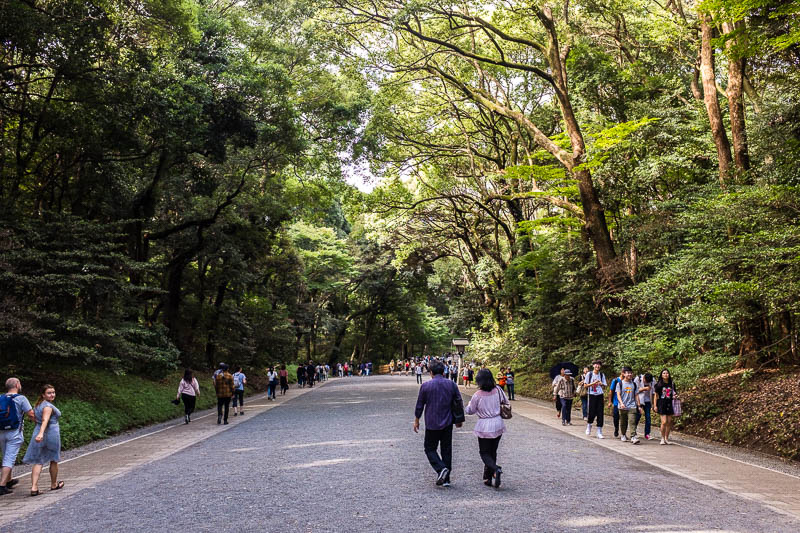[content_slider]
[content_slide]

[/content_slide]
[content_slide]

[/content_slide]
[content_slide]

[/content_slide]
[content_slide]

[/content_slide]
[content_slide]

[/content_slide]
[content_slide]

[/content_slide]
[content_slide]

[/content_slide]
[content_slide]

[/content_slide]
[/content_slider]
TOKYO | Meiji Jingu (Meiji Shrine) honours the deified spirits of Emperor Meiji and his wife Empress Shoken, who played a significant role in the Meiji Restoration, which led to a period of rapid industrialisation and modernisation in Japan.
Completed in 1921, the shrine is built in the traditional nagare-zukuri style, using primarily Japanese cypress and copper. The original shrine was destroyed during the Toyko air raids of World War II, and rebuilt in 1958. It’s located next to Yoyogi Park, and forms part of a large forested area. Walking through the grounds which lead to the shrine from the entrance near Harajuku Station, there’s an immense sense of calm. Despite being in the centre of Tokyo, it feels like you’re worlds away from the bustling city.
Visitors to the shrine can take part in Shinto activities like making offerings at the main hall, buying charms and amulets or writing out one’s wish on an ema (wooden wishing plaque). It’s a popular spot for weddings, and if you visit on the weekend it’s not uncommon to see bridal parties making their way through the shrine’s grounds.
While at the shrine you can visit the Meiji Jingu Treasure House, which displays several personal belongings of the Emperor and Empress. There’s also a Museum Annex Building that displays temporary exhibitions, and the Inner Garden, which requires an entrance fee to enter.
Meiji Jingu
1-1 Yoyogikamizonochō, Shibuya-ku
Tokyo 151-8557
Japan
Telephone: 03 3379 5511
E-mail: n/a
Website
Open
Sunrise to Sunset – varies by month.

